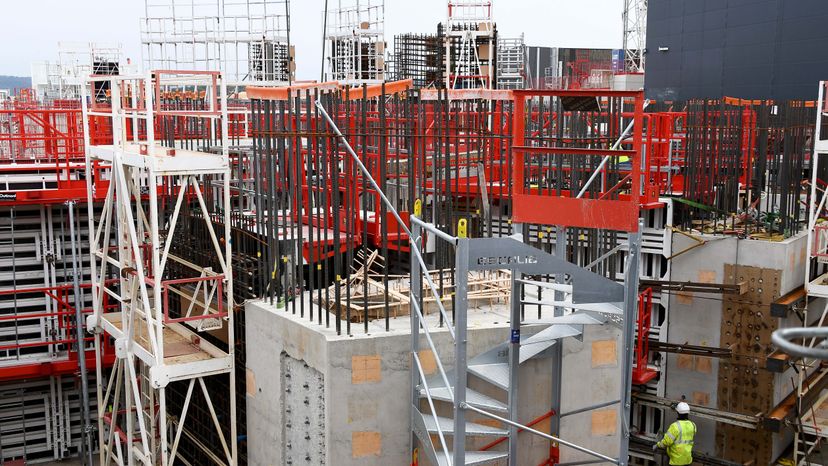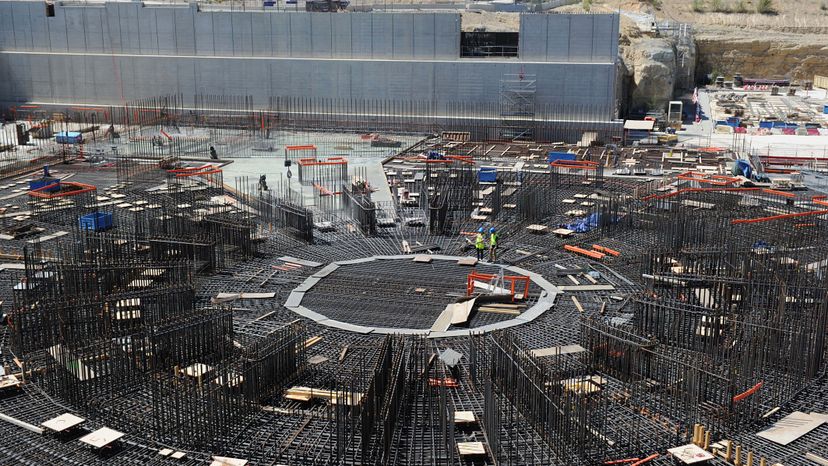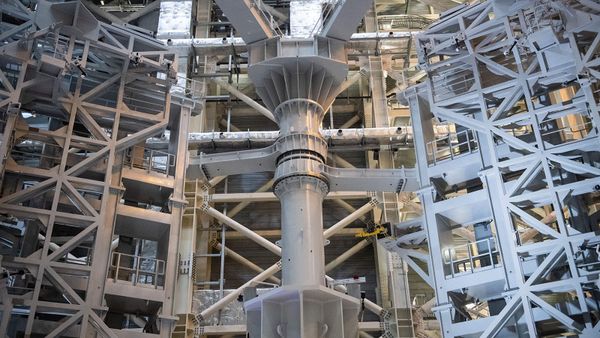
The sprawling landscape of construction cranes and partially completed buildings, along with a massive metal-and-steel ring, was described as looking like a "modern-day Stonehenge" by The New York Times in March 2017. It's been a decade since construction began on the International Thermonuclear Experimental Reactor plant, known as ITER. The project, which involves 35 nations including the U.S., aims to demonstrate that nuclear fusion — the combining of hydrogen isotopes to form helium, the same process by which stars generate light and heat — could be a viable future source of power generation for an energy-hungry world.
The project has been dogged by delays and seen its projected cost nearly quadruple over the years to 18 billion euros ($22 billion), and even a 2016 U.S. Department of Energy report supporting the project expressed uncertainty about whether it ultimately will be successful. In early December 2017, ITER officials announced that they had reached an important milestone, by completing 50 percent of the total construction work needed to reach "First Plasma." That initial stage of operation, in which hydrogen will be turned into a hot, electrically-charged gas, currently is scheduled to occur in 2025. (It will take another decade of work after that for ITER to generate energy.)
Advertisement
"When we prove that fusion is a viable energy source, it will eventually replace burning fossil fuels, which are non-renewable and non-sustainable," Bernard Bigot, ITER's director general, explained in a statement on the project's website. "Fusion will be complementary with wind, solar, and other renewable energies. ... By demonstrating the feasibility of fusion as a clean, safe, and nearly limitless source of energy, we can leave a strong legacy for future generations."
In an email, Columbia University professor Gerald A. Navratil, a leading fusion energy researcher whose work influenced ITER's design, describes the construction milestone as a "significant event in the development of practical fusion energy."
ITER will contain the world's largest tokamak, a magnetic device first developed by Soviet researchers in the late 1960s, which essentially simulates the intense heat and pressure inside the internal furnace of a star. According to an explanation on the ITER website, the device uses a powerful electrical current to break down hydrogen gas, stripping away electrons from the nuclei to form plasma — a hot, electrically-charged gas. As the plasma particles become energized and collide, they heat up, eventually reaching a temperature between 100 and 300 million degrees Celsius (about 180 million to 360 million degrees Fahrenheit). At that point, the hydrogen nuclei are so energized that they can overcome their natural tendency to repel one another, so that they can fuse to form helium. In the process, they release enormous amounts of energy.
As this article from World Nuclear Association details, experimental tokamaks have been generating energy for decades. But so far, they've required more energy to operate than the fusion generates. But ITER hopes to overcome that limitation, in part, with sheer size. The March 2017 New York Times article on the project describes the tokamak as standing 100 feet (30.5 meters) tall and stretching another 100 feet in diameter, and a description on the ITER website says it will weigh more than 25,000 pounds (23 metric tons), with a volume of 30,000 cubic feet (840 cubic meters). That's 10 times the capacity of any previous device.
Advertisement

